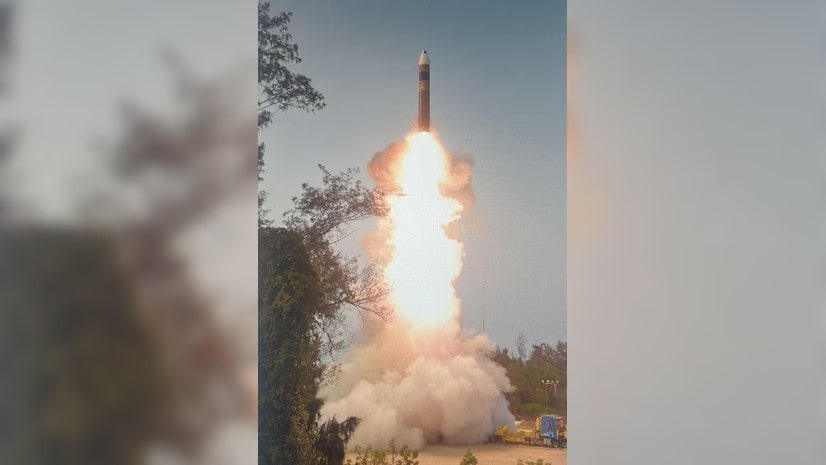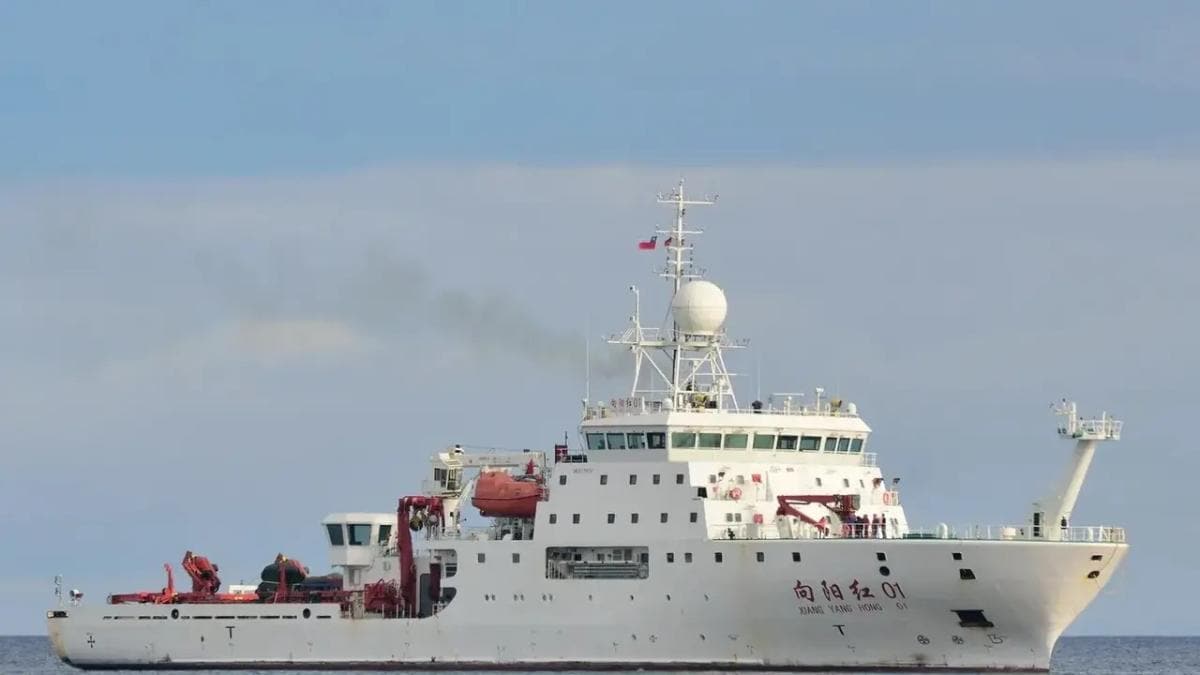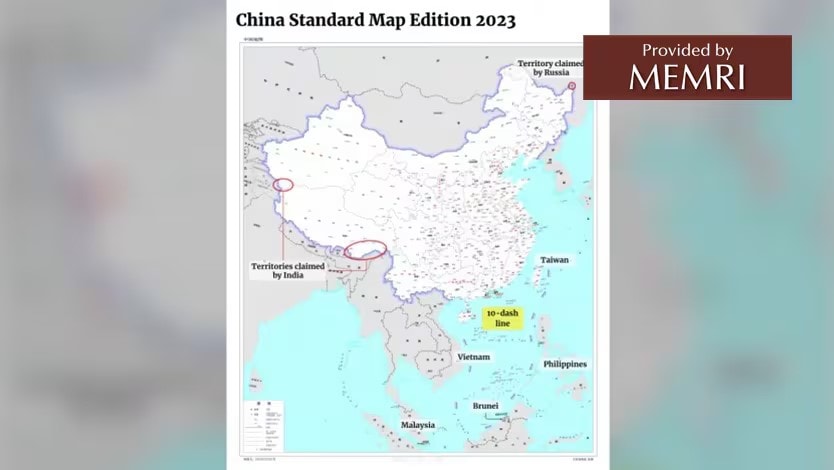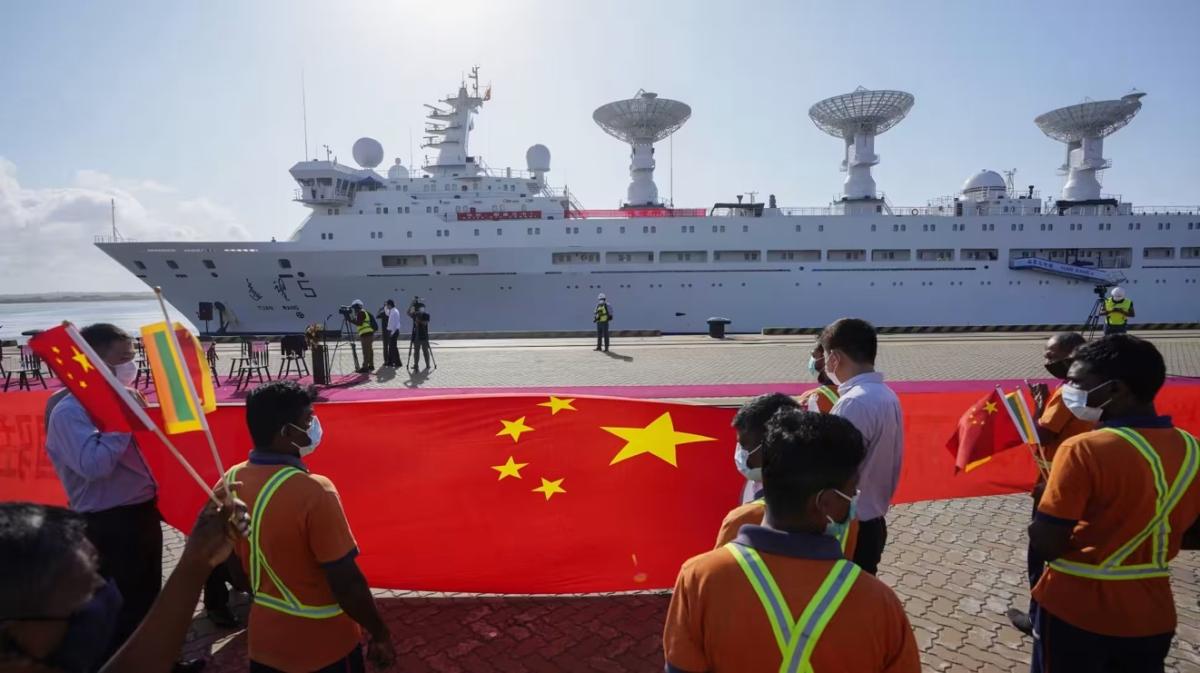China's Espionage Operation
March 11 was a milestone for India. On that day, India's Defense Research & Development Organization tested its new domestically manufactured missile called the "Divyastra [Hindi, Divine Weapon]." The Divyastra is a Multiple Independently Targetable Re-Entry Vehicle Missile, in other words, a ballistic missile that contains multiple warheads, each capable of hitting several targets in a single strike.[1]

Indigenously Developed Agni-5 Missile. (Source: Photo Posted On X By @DRDO_India)
The missile test was conducted in Abdul Kalam Island, off the coast of Odisha state. And an uninvited guest was found lurking in the perimeter: a Chinese vessel called Xiang Yang Hong 01. The vessel was spotted in the Bay of Bengal, clandestinely sailing within the vicinity of the test site. The Chinese never asked permission to navigate the waters near the coast of Odisha state. It sailed as if adrift, not declaring its final destination.[2]

Xiang Yang Hong 01 (Source: MarineTraffic)
As has become standard practice, the Chinese claimed the ship was only a research vessel – a tired and worn-out excuse. We all know that Chinese "research vessels" double as military spy ships. Their prevalence and frequent incursions on the Exclusive Economic Zones (EEZs) of others exemplify the systematic breach of the rules-based order that keeps international waters safe.
The Xiang Yang Hong was found to be in the Bay of Bengal to assess the Divyastra's characteristics, strength, and weaknesses. It was a classic espionage operation.
China and India have a border dispute that encompasses the regions of Ladakh, Himachal Pradesh, and Arunachal Pradesh. These regions have been integral parts of the Indian peninsula for millennia. Mystifyingly, however, it appeared in China's expanded map, published last year, where it claimed ownership of the territory. China also claims East Siberia,[3] the West Philippine Sea and Senkaku Islands of Japan, among many others. None of these territorial claims are backed by international recognition.

"China recently issued the China Standard Map Edition 2023, which lays claims over large swathes of the South China Sea also disputed by Malaysia, Vietnam, the Philippines and Brunei, as well as several land areas in India and Russia. The new map reasserts China's claim of Taiwan, overlaps territory with India, Malaysia, Vietnam, Russia, and others." (Source: Channelnewsasia.com)
There have been numerous armed run-ins between India in China over the disputed territories. Last February, India had to deploy 10,000 soldiers to guard the 532-kilometer border that separates China's Tibet region with India's northern states of Uttarakhand and Himachal Pradesh.[4] This is because China continues to taunt India with its gray zone bullying tactics.
This is not the first time China has illegally undertaken spy operations on India. In November 2022, a Chinese "research vessel" was spotted as India was carrying out a missile test in the Indian Ocean. In October 2023, another Chinese vessel was suspiciously docked in Colombo, and another last February in the Maldives.
China has become increasingly brazen about its espionage operations and the international community must cooperate to stop this bad behavior. If China freely deploys water cannons at vessels on whom it perceives to incur on its EEZ, so should the international community. Treating the Chinese with cotton gloves has only made them bolder. The Chinese Communist Party only understands one language – that of decisive force.
China's Debt Trap
How does one define colonization? Outside gaining religious and political hegemony, colonization involves plundering a country's resources to gain wealth to the detriment of the colonized country. The colony is often left impoverished and politically broken.
These days, colonization has taken a new form. Colonies are no longer won by wars but through debt. China has emerged as the prime colonizer of our generation.
Through its Belt and Road Initiative, China grants loans to impoverished nations that need fast money. More often than not, these nations carry unfavorable credit ratings and are unable to borrow with ease from institutional lenders like the World Bank. China presents itself as a willing lender who is neither concerned about loan sustainability nor project viability.
What does China get in exchange for its loans? It gets first dibs on the country's natural resources, be it gas, oil, copper, cobalt or rare metals. It is called resource-backed debt. China holds a wide portfolio of such debts, mostly from African countries.[5]
Resource-backed debts are by no means fair. They come with brutal riders. Apart from consigning the country's natural resources to China, Beijing also dictates the price in which these natural resources are valued. In some cases, the riders are so severe that the Chinese are permitted to subsume sovereign territories in case of a loan default. Such was the case with the Hambantota Port of Sri Lanka.

Workers hold a Chinese flag at Hambantota port in Sri Lanka on August 16, 2022. (Source: Asia.nikkei.com)
China exploits the desperation of poor countries and their need for fast cash. It is the classic definition of a loan shark. Exacerbating matters is that filing cases before international courts is a futile option for debtor countries. This is because China is notorious for ignoring court decisions and rulings. The debtor countries are left to live with the full load of stiff conditions arising from Chinese debt.
In the Philippines, the Marcos administration correctly canceled three projects funded by the Chinese. These include the PNR Calamba-Bicol railway, the Subic-Clark railway and the Mindanao Railway, collectively worth $5.02 Billion. The Philippines is in no risk of falling into China's debt trap.
Sadly, the same cannot be said about certain nations in Africa, South Asia, and Latin America, all of whom consigned their natural resources to China for a pittance. These countries were colonized before and gained freedom through blood sweat and tears. Now they find themselves "colonized" all over again through debt.
*Andrew J. Masigan is the MEMRI China Media Studies Project Special Advisor. He is a Manila-based economist, businessman, and political columnist for The Philippine Star. Masigan's articles in MEMRI are also published in The Philippine Star.
[1] "On March 11, 2024, India tested its most formidable Agni-5 ballistic missile with a multiple warhead capability for the first time over the Bay of Bengal, in a major boost for the country's credible strategic deterrence, especially against China – the 'Divyastra', the Agni-5 missile with Multiple Independently Targetable Re-entry Vehicle (MIRV) technology. With the successful Mission Divyastra, India has joined the select group of nations that have MIRV capability although more MIRVed missile tests would be needed before India operationally deploys this new capability." Spslandforces.com/experts-speak/?id=1114&h=Divyastra-Launched, March 14, 2024.
[2] "Just weeks before India conducted the key flight-test on Monday of its 5,000-km-range Agni-5 inter-continental ballistic missile, which is believed to be capable of targeting nearly all of China, Beijing sent its second research vessel to the Indian shores, besides the first one that was already anchored off Maldives, to likely 'keep an eye' on the crucial test from the Dr APJ Abdul Kalam Island off the Odisha coast..." Timesofindia.indiatimes.com/india/china-deployed-vessel-to-keep-eye-on-agni-5-test-from-indian-shores/articleshow/108411759.cms, March 12, 2024.
[3] Rfi.fr/en/international/20230321-territorial-dispute-between-china-and-russia-risks-clouding-friendly-future, March 21, 2024.
[4]"India has deployed 10,000 troops along the Line of Actual Control (LAC) to guard the sensitive border region connected to China. In response, China has stated that India's increased border deployments won't ease tensions between the two nations. The move signals India's heightened sensitivity to security concerns following a deadly clash in 2020 that resulted in the loss of at least 20 Indian soldiers. In response to escalating tensions, both India and China have since enhanced their military presence, upgrading infrastructure, and deploying additional troops, missiles, and aircraft along the contentious border." Firstpost.com/vantage/amid-border-standoff-with-china-india-deploys-10000-fresh-troops-vantage-with-palki-sharma-vd6885/, March 9, 2024.
[5] See MEMRI Special Dispatch No. 9372, Renowned Ghanaian Economist George Ayittey: 'Chinese Investment In Africa: Chopsticks Mercantilism', June 3, 2021.




